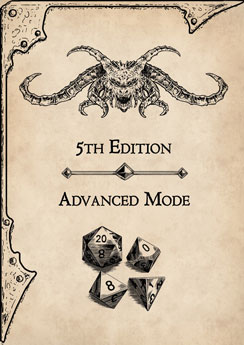Large beast (animal), unaligned
Armor Class 12
Hit Points 13 (2d10+2)
Hit Points (suggested) 19 (3d10+3)
Speed 30 ft., swim 30 ft.
Proficiency Bonus +2
Proficiency Bonus +2 (5th Edition Advanced Mode)
| STR | DEX | CON | INT | WIS | CHA |
|---|---|---|---|---|---|
| 15 (+2) | 14 (+2) | 12 (+1) | 1 (-5) | 10 (+0) | 3 (-4) |
Skills (suggested) Stealth +4
Senses Blindsight 10 ft., passive Perception 10
Challenge 1/4 (50 XP)
Enwrap (suggested). When the constrictor snake has grappled a target, half the damage inflicted to the snake is inflicted to the target unless the attackers decide to inflict minimum damage with their meele weapons, or take disadvantage with their range weapons.
Tree Ambush (suggested). The constrictor snake can ambush a target by dropping on it from the height of a tree. The constrictor snake gains advantage on all attack rolls in the first round of combat.
ACTIONS
- Multiattack (suggested). The constrictor snake can make two attacks with its bite or one attack to constrict.
- Bite. Melee Weapon Attack: +4 to hit, reach 5 ft., one creature. Hit: 5 (1d6 + 2) piercing damage.
- Bite (suggested). Melee Weapon Attack: +4 to hit, reach 10 ft., one creature. Hit: 4 (1d4 + 2) piercing damage.
- Constrict. Melee Weapon Attack: +4 to hit, reach 5 ft., one creature. Hit: 6 (1d8 + 2) bludgeoning damage. The target is grappled (escape DC 14) Until this grapple ends, the creature is restrained, and the snake can’t constrict another target
5th Edition Advanced Mode
Limiting the power of a character and making the overall difficulty of the game harder, does not reduce the creativity, indeed it does quite the opposite. The Game Master has the option to use any and all of the instances proposed in this guide, or just some of them according to their preference.
It is the lack of something that move and motivate characters, not the abundance of it
DESCRIPTION
A constrictor snake is a large, muscular beast that hunts by grabbing prey with its mouth and then squeezing it with its powerful body. It has a long, slender body covered with scales that range from brown to green in color. Its head is triangular and has a pair of small eyes that can sense heat and movement. A constrictor snake can grow up to 20 feet long and weigh up to 300 pounds.
COMBAT
A constrictor snake relies on its stealth and speed to ambush its prey. It can hide in trees, bushes, or water, and strike when the target is within reach. It can also swim swiftly and silently, making it a dangerous predator in aquatic environments. A constrictor snake attacks with its bite, which can inflict piercing damage and inject venom. The venom is not very potent, but can cause nausea and weakness in the victim. The snake’s main weapon, however, is its constrict ability. Once it bites a creature, it wraps its coils around it and squeezes tightly, causing bludgeoning damage and preventing the creature from escaping. A constricted creature is restrained and cannot breathe, which can lead to suffocation and death.
HABITAT / SOCIETY
A constrictor snake is a solitary creature that lives in warm and temperate climates. It prefers habitats that offer cover and water, such as forests, swamps, jungles, or rivers. It is not very territorial, but will defend its hunting grounds from other predators. A constrictor snake does not have any social bonds or communication skills, except for a hissing sound that it makes when threatened or angry.
ECOLOGY
A constrictor snake is a carnivore that feeds on a variety of animals, such as rodents, birds, reptiles, amphibians, fish, or even larger prey like deer or boars. It can swallow its food whole, thanks to its flexible jaw and expandable stomach. It can also go for long periods without eating, as it digests its food slowly. A constrictor snake reproduces by laying eggs, which it buries in a hidden spot and leaves them to hatch on their own. The young snakes are independent from birth and must fend for themselves. A constrictor snake can live up to 20 years in the wild.
